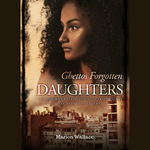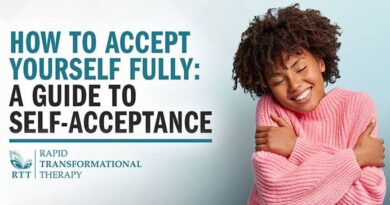Healing From Childhood Trauma to Thrive and Empower Others
Healing From Childhood Trauma to Thrive and Empower Others
Introduction

Childhood trauma can take many forms, from physical or emotional abuse to neglect or abandonment. It can have a lasting impact on a person’s mental and emotional health, affecting their ability to trust, form healthy relationships, and feel secure in their own skin. But healing from childhood trauma is possible, and it can lead to a life of thriving and empowerment. Trust me, I did it, and so can you.
As someone who has experienced childhood trauma, I know firsthand how difficult it can be to overcome. But I also know how transformative the healing process can be. In this blog post, I’ll share some of the insights I’ve gained on my own journey, as well as some practical tips for healing from childhood trauma and using that healing to empower others.
Section 1: The Impact of Childhood Trauma
Childhood trauma can have a profound impact on a person’s life, affecting everything from their self-esteem to their ability to form intimate relationships. For me, the effects of childhood trauma manifested in a variety of ways, including:
Anxiety and Depression: I struggled with anxiety and depression for years, often feeling like I was trapped in a cycle of negative thoughts and emotions.
Trust Issues: Because the people who were supposed to love and protect me had let me down, I found it hard to trust anyone, even those closest to me.
Self-Doubt: I didn’t feel like I was worthy of love or success, and I often second-guessed my own abilities and decisions.
These are just a few examples of the ways that childhood trauma can impact a person’s life. But healing is possible, and it starts with acknowledging the impact of trauma and taking steps to address it.
Get your signed copy of Marion Wallace’s book, Ghettos Forgotten Daughters!
Section 2: Healing From Childhood Trauma
Healing from childhood trauma is a process that looks different for everyone. Here are some strategies that have helped me and others on our healing journeys:
Therapy: Therapy can be a powerful tool for healing from childhood trauma. A trained therapist can help you process your emotions, learn coping skills, and work through negative thought patterns.
Mindfulness: Practicing mindfulness can help you stay present in the moment and reduce anxiety and stress. This can be as simple as taking a few deep breaths or doing a body scan meditation.
Self-Care: Taking care of yourself is essential for healing from childhood trauma. This can include things like getting enough sleep, eating well, and engaging in activities that bring you joy.
Identifying Triggers: Trauma can be triggered by certain situations or events. Identifying these triggers can help you anticipate and manage them, so they don’t derail your healing process.
Section 3: Empowering Others Through Healing
Once you’ve started the healing process, you may find that you want to use your experience to help others who have gone through similar struggles. Here are some ways that you can empower others through your healing:
Sharing Your Story: Sharing your story can be a powerful way to let others know that they’re not alone and that healing is possible. Whether you choose to share your story publicly or with a trusted friend, opening up about your experiences can be liberating.
Becoming a Mentor: If you’re further along in your healing journey, you may want to consider becoming a mentor for others who are just starting out. This can involve sharing your strategies for coping with triggers, offering emotional support, and providing encouragement.
Advocating for Change: Childhood trauma is a systemic issue that requires systemic change. By advocating for policies and programs that support survivors of trauma, you can help create a more supportive and healing society.
Additional Reading:
The Keys to Success & The Causes of Failure!
Defining Emotional Intelligence: Understanding the Neuro-Anatomy of Your Emotions
Conclusion
Healing from childhood trauma is a journey that requires patience, self-compassion, and a willingness to face difficult emotions. But the rewards of healing are immense. By working through your trauma, you can not only improve your own mental and emotional health but also empower others who have gone through similar experiences. Remember, healing is possible, and you’re not alone on this journey.




